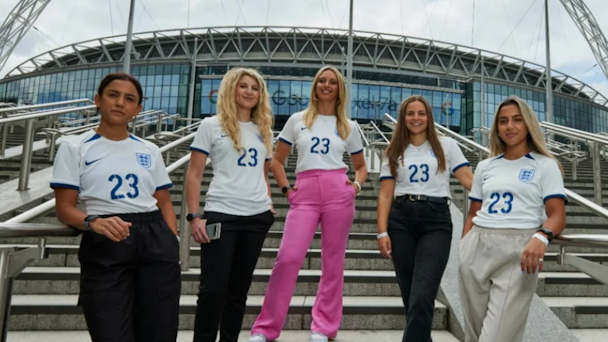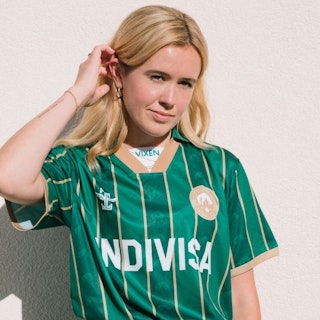This isn’t a men’s World Cup; women are creating new norms
Morgan Brennan is a social media expert, footballer and founder at Footballco’s Indivisa. She reflects on what some feel has been a muted marketing build-up to the Women’s World Cup in Australia.

You don’t need to tell me it’s coming. It has occupied my days since before the men’s World Cup rounded off 2022. But the impression I’ve got from people who don’t have women’s football as part of their personal and professional lives is that it doesn’t feel like a World Cup is on the way.
But what should the build-up to a Women’s World Cup feel like?
Many know what the build-up to a men’s World Cup feels like; they recognize the beats. Nail-biting qualifications, papers splashing the national team on the front pages and broadcasters building hype the moment the domestic season wraps up. Quite often, the beats come from brands with campaigns from World Cup partners marking the start the same way John Lewis and Coca-Cola let consumers know Christmas (or the holidays) are coming.
With all of this in mind, I can forgive some for feeling that the Women’s World Cup buzz isn’t as loud as expected and that women’s football has dropped the ball when safe hands are needed most. But I firmly believe this is not the case. Here’s why.
This isn’t a men’s World Cup with historically monumental funding and advertising deals; this is different. The ball hasn’t been dropped; it’s just kicked off a bit later than expected.
Footballco has spoken in depth with partners about Women’s World Cup campaigns since the start of the year, from new brands looking to connect to new fan groups to established football sponsors investing in the women’s game. Partners don’t come much bigger than Google, which is teaming up with Goal to champion its Google Pixel FC collective in the UK.
Some of the subdued perceptions in the UK can be attributed to the back-and-forth between Fifa and broadcasters, which has delayed the pre-tournament build-up on TV and possibly caused some campaigns to launch later.
That’s very different from what we’ve seen in the US, where broadcasters getting in early has helped to build hype in a country where women’s football is seen differently than anywhere else. They’re world champions, after all.
There was also trepidation with UK kick-off times – not surprising for a tournament played on the other side of the world. But the Lionesses will kick off their campaign with a 10.30am match on a Saturday against Haiti, with their remaining group games at 9.30am and 12pm during the week. Not as bad as expected, especially with many fans able to watch and work from home. Football is working from home.
But it is also worth remembering that there’s a massive misconception that TV is the primary way fans will connect with football this summer. We spoke to more than 2,000 women’s football fans at the start of the year and found that social media and websites were more popular ways to engage with the World Cup than watching on TV among ‘super fans’ (79% v 74%) and ‘supporters’ (75% v 70%). Our April Women’s Football Fandom reports showed that the biggest fanbase for women’s football is Gen Z, with unique content consumption habits and expectations. The Women’s World Cup audience is different from the 2022 World Cup.
Live matches are important for these fans but are not critical to engagement. The report also highlighted the length of fandom within women’s football. The US had more fans following the game for more than three years than any country, with an impressive 45% following for six years or more. This can be partly attributed to the long-term investment and infrastructure for girls’ football since the 90s.
Advertisement
What we see in the US is where England is heading, with the Women’s Euro win providing a springboard reminiscent of the 1999 Women’s World Cup USWNT triumph.
I believe there have been some false expectations pre-tournament, based on what was witnessed during the 2022 Women’s Euro and what we expect from Fifa World Cups.
For many fans in England swept up in the Euros, this will be their first Women’s World Cup. They’re creating their own norms rather than mimicking the men’s fans. They’re younger and more likely to be female.
We’re days out from the Women’s World Cup, which will be a success for fans, brands and the women’s game. We’re part of a digital generation leading coverage of the tournament while TV plays catch up, and when it gets going, I expect to see the Lionesses to be on the front pages once more.
This will be helped by a strong chance that England will make it to the final, where they could face the USA or Germany in what will be a fantastic climax. Personally, I’m hoping to see the Matildas go all the way.
Brands getting behind women’s football is vital as commercial interest continues its positive growth in recent years. This World Cup is the first that Fifa hasn’t bundled in with the men’s World Cup partnerships – that’s a considerable change and echoes what Uefa did with the Women’s Euros.
It should not be forgotten that this is a massive opportunity for Australia. Hosting a tournament like this is valuable for all countries, but with Australia having locked down earlier and longer than most during the pandemic, the country knows the opportunity hosting holds and will not let it pass them by. Also, we Antipodeans are great hosts. Women’s football is in very safe hands.

